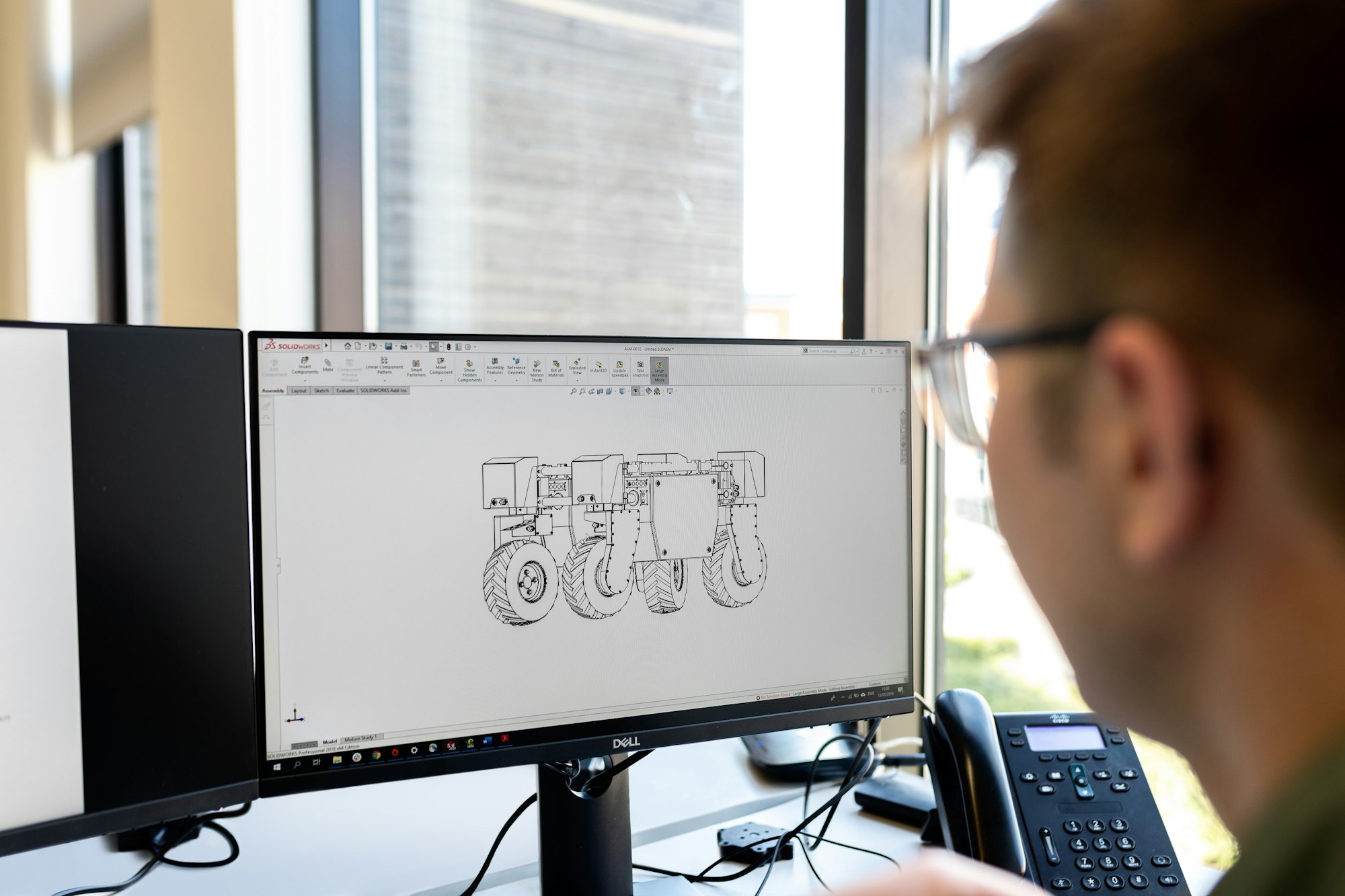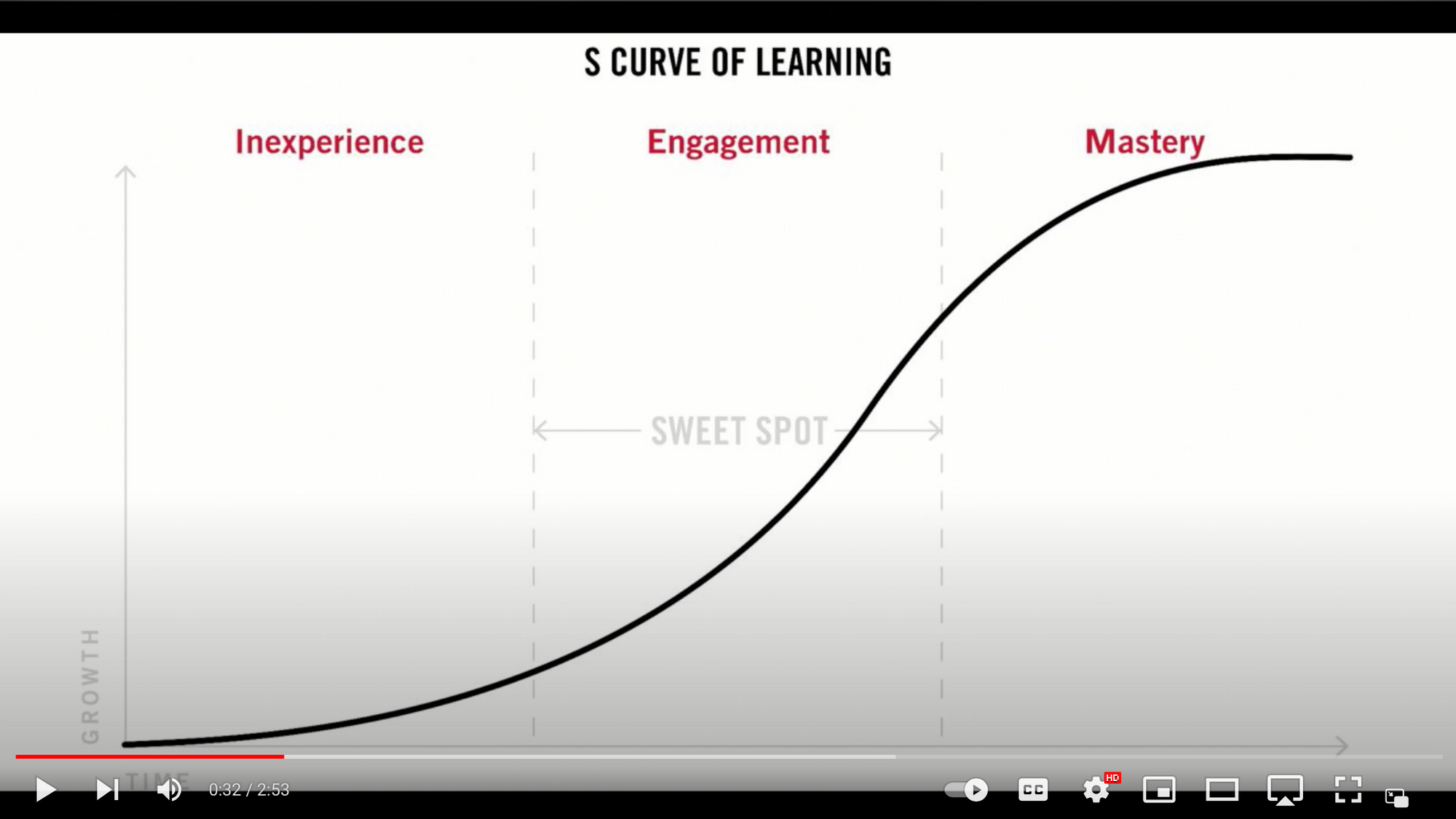Visualize Your Career Development with the S-Curve of Growth

It can be challenging to visualize how our career development is sometimes going.
You may find yourself thinking:
- Am I improving and growing my skillsets?
- Should I stay in my current assignment/position or try something new?
There is no curriculum to follow like in grade school to show your progress in developing skillsets in your career.
If you are not mindful of what you are learning at work, you may have all these years of experience with little skillsets or knowledge to show for it. You get to this point because you were not challenging yourself with new assignments or positions that pushed you out of your comfort zone and into the skill development zone.
Visualize Your Skill Development Stage with the S-Curve of Growth
The S-Curve of Growth is a visual you can use to help you better understand where you are in your skill development stage for your current position or assignment.

The S-Curve of Growth has three stages:
- Learning Stage
- Growth Stage
- Mastery Stage
When assigned a new assignment or position, you start at the bottom, which is the learning stage. Over time as you begin learning more about the assignment/position, you climb up the S-Curve into the growth stage until you reach mastery.
Learning Stage
In the learning stage, you are inexperienced and are learning the essential information and skills you will need for your new position/assignment.
These skills will be used to complete the assignment and excel in your positions.
For example, you have to mechanically design a handling fixture using Computer Aid Modeling (CAD) software you have yet to use. You will learn more about creating the handling fixtures, such as the design requirements. You will also learn the fundamentals of this assignment's particular CAD software.
Growth Stage
In the growth stage, you start applying the fundamental skills and knowledge you learned in the growth stage and further develop them as you progress more in the position/assignment.
You are most engaged in your work in the growth stage.
Be cautious to avoid having such a steep growth curve that you start to burn out. I talk about burnout due to high stress in this article.
The growth stage is where you want to be to develop your skillsets and gain more knowledge in your craft.
Continuing on the previous example, at this stage, you know how to use the CAD software well and better understand what it takes to design the handling fixture for the assignment. You are applying what you learn in the learning stage and making good progress in completing the task.
Mastery Stage
In the mastery stage, you completed the assignment and know how to accomplish your responsibilities for your position well. You don't find it challenging anymore and are starting to feel bored because your work is not mentally stimulating anymore.
In this stage, you want to find the next S-Curve to climb up to develop your skillsets further and gain more knowledge in your craft.
To help jump to the next S-Curve, ask your manager for a new assignment, or consider changing positions. The ease of this change will rely on your company's culture.
Another avenue you could take is to talk to people in your network or search online and see what other opportunities are at a different company site or company overall.
Depending on your season in life, however, you may decide to stay in this stage since you are not prioritizing your career development. You may have instead decided to focus on your family, a hobby, or some other reason.
To wrap up the example, at this stage, you know the CAD software well enough to complete the assignment. You have also completed the handling fixture design and understand what it takes to design a handling fixture for this assignment.
At this point, you should take on a new assignment designing something completely different or a more complex handling fixture to start another S-Curve cycle.
Applying the S-Curve of Growth to Your Career
Reflect on your current assignment. Where do you land on the S-Curve? Ideally, you want to be at the growth stage.
Talk to your manager if you find out that you are at the mastery level. Tell your manager that you would like to take on either a new position or transition to a new assignment so that you can continue to develop your skillsets and gain more knowledge for your craft.
You could also talk to people in your network or search online and see what other opportunities there are at a different company site or company overall.
If your priority in life at the moment is outside of work, then you may decide to stay at the mastery level since the work at this stage is easy for you. The only thing to remember is that you may feel bored at work since you receive little mental stimulation from the assignment or position you mastered. Lack of mental stimuli may lead to "bored out," which I talked about in the same article previously mentioned.
Reflect on where you currently are on the S-Curve at least once every three months. Based on your reflection, take action on what you want out of your career.
Conclusion
Applying the S-Curve to your career development will help you visualize your current skill development journey.
Look to keep climbing new S-Curves to help you develop your skillsets and gain more knowledge in your craft.